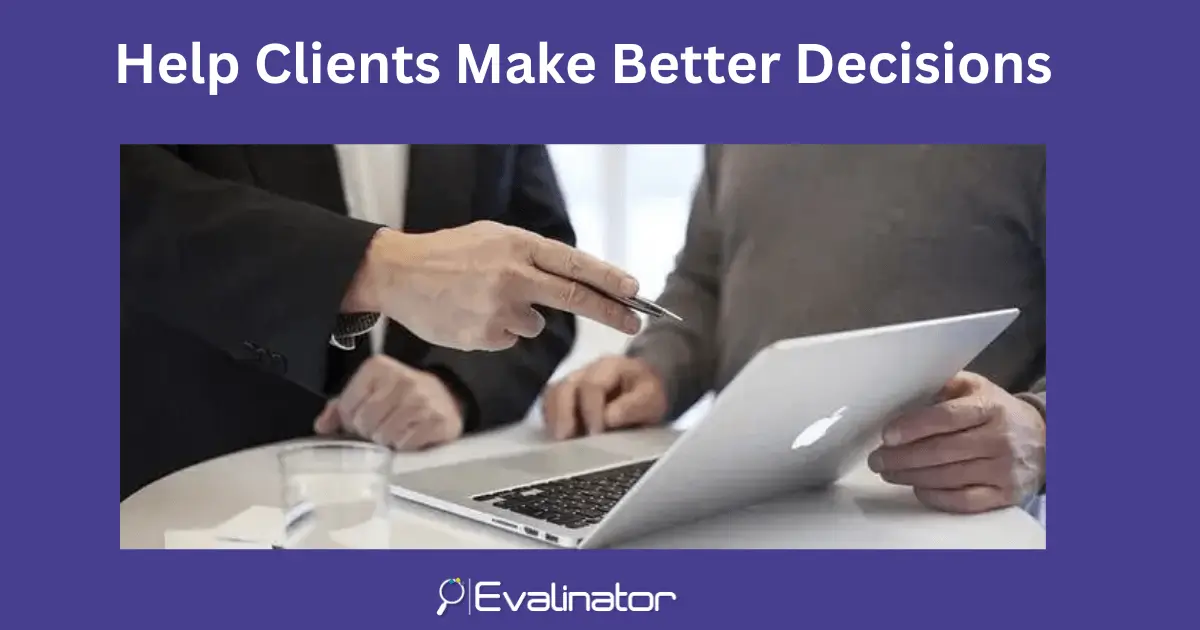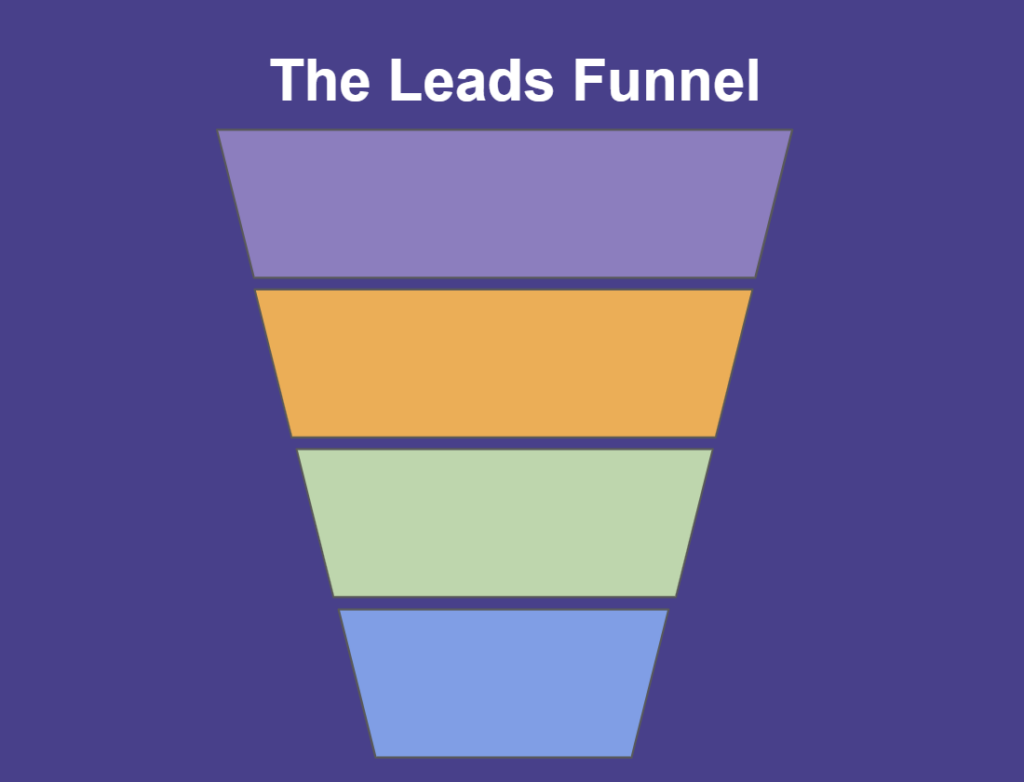


A recent report by Gartner shows how we can drive 157% better outcomes if our sales enablement tools can help with “sense making” (1).
In simpler words for the rest of us – we should help our clients make informed decisions.
Doing so has several benefits:
Overall, it improves the predictability of the sales pipeline and helps to get off the treadmill of “selling to the customer”.
So sales enablement tools should be geared to help clients, not just target clients better.
In this blog, we’ll use 3 stories to do that.
Consider Alexi. She is preparing for a meeting with a prospective client.
Even though the client’s profile is available, the agenda of this first introductory meeting is still very broad.
While Alexi wants to present everything her company does, she also fears that this meeting would result in no clear follow-ups. And then she would have to spend a lot of time trying to convince the client for another meeting.
How could she ensure that the meeting to result in some purposeful insights that will generate a quality follow up?
Then she gets an idea. She had seen a coaching friend use a Wheel of Life with clients to get to know each other better.
Could she do the same? Since Alexi is in tech sales, she decides to work with her practice lead Arun to create a structured needs assessment. That way, they’d be able to uncover the key challenges faced by the client, and share their insights too.
During the meeting, Alexi & Arun presented their services and asked the client about current challenges, the client’s roadmap, and the top priorities. These questions were enabled by the preparation on the needs analysis.
At about the 20 minute mark, Alexi shared her screen and showed the client what she had captured in the needs assessment. It graphically showed the clients a framework that Arun had created and the gaps in the clients portfolio.
The conversation immediately shifted to being more consultative. It was no longer about Alexi and Arun presenting their services. Instead, the focus shifted to the framework and what the client could do to address the gaps.
A good rapport was established. They agreed to meet again to review the results in more detail and see a demo of a solution that Arun’s team had built.
Thus, Alexi built a solid trust equation with her client, and kept the sales cycle moving forward without delays.
Her needs assessment helped the client make sense of the noise. This simple sales enablement tool took Alexi from a mere transactional information exchange into a consultative conversation that positioned her and Arun as trusted advisors.
All of us, whether we coach, consult, or sell products and services, want to ultimately increase our clients’ lifetime value.
As a result we are constantly looking for the right cross-sell and up-sell opportunities.
The best way to do that is to help our clients better meet their goals so we can have a lasting and growing relationship.
Consider the story of Daniel, a full stack developer and a senior architect.
Daniel’s client is embarking on a new project. As often happens, everyone had a different opinion on which type of database to choose. SQL? NoSQL?
Daniel has had some experience with this. So, he thought it’ll be great to step in and help the client team arrive at a consensus and make an informed decision—one that aligns with the project’s specific needs.
He could create a simple scoring spreadsheet to achieve this, but Daniel wanted to make this decision making tool available as an asset to other teams. He also didn’t want multiple copies floating around. Updating them would be a nightmare, not to mention that there would be no sharing of best practices or analytics on the data.
So Daniel created a customizable SQL or NoSQL product selector that was fully online. This product recommendation tool guided his team through the decision-making. It became a big hit because it got things started in the right direction and gave the team an anchor for the decision.
Other project teams used it with success too, and often for sales enablement. Over time they ended up creating multiple maturity models to uncover new opportunities at their account. These tools helped them drive higher client satisfaction – and more growth. No duplicate copies were needed and all of them could keep their client data separate. These became part of the standard sales enablement tools.
Coaches do the same using personality assessments such as the DISC or Big 5, and a custom Wheel of Life.
High client lifetime value results from building trust and helping clients make better decisions.
In the dynamic world of business, two things are evergreen concerns:
Meet Sarah, a sales enablement & marketing lead. She was looking for more ways to generate leads and differentiate her company’s brand.
She was noticing that while her team had a lot of expertise, that expertise was often not positioned very uniformly.
For example, they had recently helped a client with software security. And they now had a lot of expertise in that area.
But this information was neither known to many, nor presented too often to clients.
In other words, the expertise needed to be unlocked.
Sarah idea was to translate stories like this in an interactive, online form.
“We could also provide the same tools to our sales and account teams to engage clients”, she pondered.
Enter the “Software Security Assessment“. It was a simple self-assessment that the clients visiting their website could use for self-discovery with just a simple click.
In this consultative model, clients found themselves experiencing the expertise of the company.
And, then their sales team could engage both prospective and existing clients in more detailed discussions.
It was a win-win situation for lead generation and brand value. as Sarah’s team also wrote multiple targeted blogs on these topics.
By helping the clients make sense of the available information, Sarah improved lead generation quality and established an expert brand at the same time.
Unlocking our expertise is often a first step if we want to help the clients make sense of the information that is available to them.
If any of the above stories appealed to you, we encourage you to go ahead and sign up for a 2 weeks trial on Evalinator. We are here to help you help your clients make better decisions.
There are many ready-made templates available and we can help you create additional ones as well.
Rather than just creating quizzes and assessments, the Evalinator platform is about helping you create marketing and sales enablement tools that support your ultimate goals of establishing an expert brand and revenue growth.
Explore the possibilities with Evalinator and unlock the potential of consultative client engagement.
Ref: Gartner Sense Making Approach

Feeling frustrated with lead generation?
Take this free, 5-minute quiz and get more prospects into your leads funnel.
Instant Results. Actionable recommendations. Email required.
Find Your Score >>